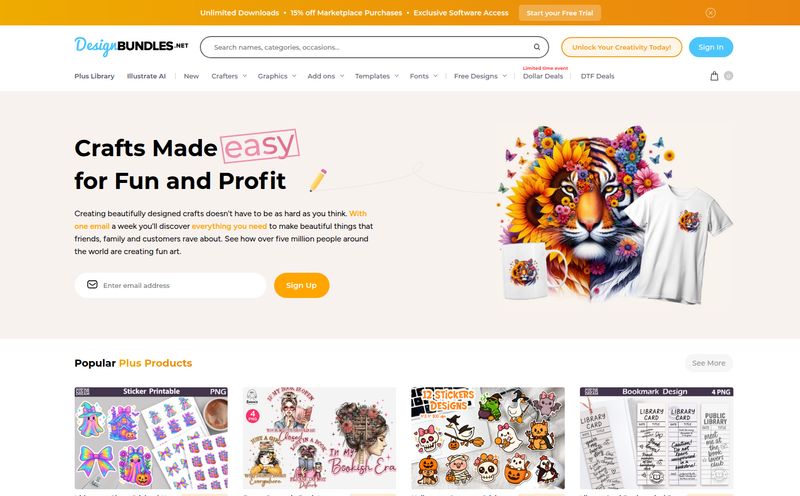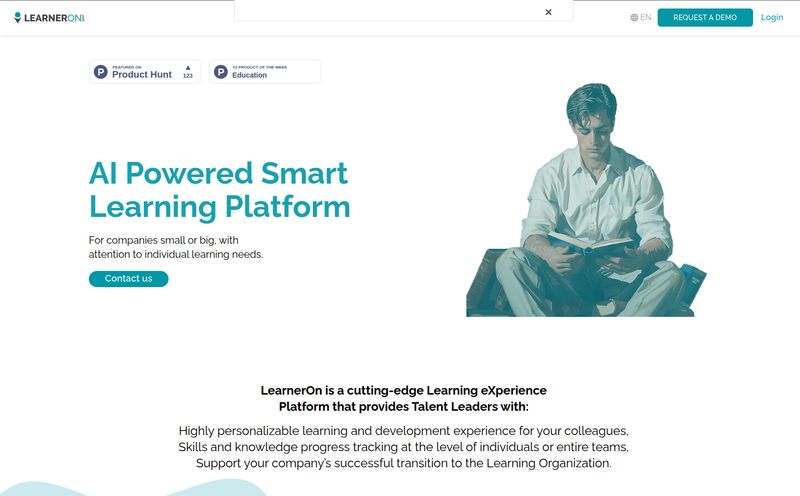For years, I’ve worked on digital marketing for developers and engineering firms, and I've seen the process up close. It’s a beast. A slow, methodical, paper-cut-inducing beast. For decades, it’s been a delicate dance of surveyor data, zoning regulations, topographical maps, and an engineer's gut feeling, all painstakingly layered in CAD software.
It works. But it’s slow. And expensive. And what if the first plan... isn’t the best one? Going back to the drawing board can cost weeks and thousands of dollars.
We've seen AI disrupt creative fields, marketing, and customer service. But I've always been curious about when it would truly sink its teeth into the heavy industries, the ones that deal with actual dirt and concrete. Well, that time is here, and a platform called Runopt is making some serious noise in the land development space.
So, What Exactly is Runopt?
In the simplest terms, Runopt is an AI-powered co-pilot for civil engineers and real estate developers. Imagine feeding a machine a parcel of land—its topography, its boundaries, the local zoning codes—and asking it to figure out the absolute best way to develop it. Not just a way, but the most cost-effective, highest-yield, and regulation-compliant way.
It's not about replacing the engineer. I think that's a common fear. It’s about giving that engineer a ridiculously smart assistant who can run a thousand different scenarios in the time it takes to brew a pot of coffee. It takes the tedious, repetitive calculations and spits out optimized options, freeing up human experts to do what they do best: make critical decisions and solve complex, nuanced problems.
Basically, it's designed to take the guesswork out of feasibility. Can you maximize the buildable area here? How can you minimize expensive earthwork? Is this project even viable? Runopt aims to answer those questions faster and with more data than ever before.

Visit Runopt
The Core Features That Actually Matter
A tool is only as good as its features, right? The slickest interface in the world doesn’t mean a thing if it can't deliver the goods. From what I’ve seen, Runopt focuses on the high-impact stuff that directly affects a project’s success.
Beyond Simple Layouts with AI Optimization
This is the heart of the platform. It's not just a drawing tool. Its AI algorithms analyze countless combinations of layouts, building placements, parking configurations, and green space to find the optimal design. It’s like playing Tetris with building plots, but the game is also calculating grading costs and drainage flow in real-time. This is the kind of heavy lifting that would be nearly impossible to do manually on a tight deadline.
Navigating the Red Tape with Zoning Tools
Anyone who's ever dealt with a planning commission knows that zoning rules are no joke. A small misinterpretation of a setback requirement can derail an entire project. Runopt integrates these complex local regulations directly into its analysis. It ensures the designs it proposes are compliant from the get-go, saving a ton of back-and-forth and potential redesigns down the line.
Grading and Drainage Without the Migraine
Moving dirt is expensive. One of the biggest hidden costs in land development is grading—leveling the ground to create a stable foundation and proper water runoff. Runopt’s ability to optimize grading and drainage design is, in my book, a huge selling point. It aims to balance the cut-and-fill, minimizing how much soil needs to be hauled off-site (a major cost) and ensuring the final design handles water effectively. It turns a massive headache into a data-driven calculation.
Reports Your Stakeholders Will Actually Understand
Ever sat in a meeting where an engineer tries to explain a complex site plan to a group of investors or city council members? It can get… technical. Runopt generates customizable, professional reports that are easier to digest. Visual data, clear metrics, and concise summaries help bridge the knowledge gap between the technical team and other stakeholders. This streamlined collaboration is priceless.
The Real-World Impact on Your Bottom Line
Okay, the features are cool. But what does this mean for business? At the end of the day, it's about time and money. The promise of Runopt is pretty clear:
"Faster site design, cost-effective solutions, and boosted productivity."
By automating the most time-consuming parts of the initial design phase, teams can move faster. They can evaluate more potential sites in less time, making more informed acquisition decisions. The cost savings come from that optimized grading, reduced infrastructure needs, and maximizing the profitable use of the land. When you find a way to fit one more lot on a residential plot or add 5,000 sq. ft. of leasable space to a commercial center—all while staying compliant—the tool pays for itself very quickly. I've seen projects stall for months on issues that a tool like this could potentially solve in an afternoon.
Let's Be Real, Is It Perfect?
Now for a dose of reality. No tool is a silver bullet, and it's my job to be skeptical. The biggest thing to remember is that this is an AI tool, which means it requires human oversight. An experienced engineer still needs to review, tweak, and ultimately sign off on these plans. The AI provides incredible options, but professional judgment and experience are irreplaceable. It's a classic garbage-in, garbage-out scenario; the quality of the data you provide will dictate the quality of the output.
I also noticed they mention that some very specific use cases, like rail and agricultural projects, might be part of later packages. That’s not necessarily a bad thing. To me, it shows they’re focused on perfecting their core offering—commercial and residential development—before trying to be everything to everyone. It's a sign of a mature product strategy, but something to be aware of if your work falls into those niche categories.
The Million-Dollar Question: What's the Price?
Ah, the part everyone scrolls down for. As of writing this, Runopt doesn't have a public pricing page. This is pretty common for high-value B2B software targeting enterprise clients. The cost will likely depend on the size of your firm, the number of users, and the scale of your projects.
My guess? It's a SaaS subscription model, probably with tiers. You'll have to contact them for a custom quote, which makes sense. They need to understand your workflow to sell you the right package. Don't expect it to be cheap, but expect the ROI to be the main selling point.
My Final Take as an SEO and Tech Watcher
I'm genuinely excited about tools like Runopt. For years, the construction and development industries have been seen as slow to adopt new tech. That’s changing, fast. The move towards what folks are calling 'Vertical AI'—highly specialized AI for specific industries—is where the real magic is happening. It's not about a general chatbot trying to design a subdivision; it's about a purpose-built engine that understands the physics and economics of terra firma.
Runopt feels like a powerful, focused tool that solves a very real, very expensive problem. It represents a shift from reactive design to proactive optimization. If you're in the real estate development or civil engineering world, you owe it to yourself to at least see a demo. This is the direction the industry is heading.
Frequently Asked Questions about Runopt
What is Runopt in simple terms?
Think of it as an AI assistant for land development. You give it information about a piece of land, and it generates the most efficient and profitable site plans, taking into account things like building layouts, roads, grading, and zoning laws.
Who is the ideal user for Runopt?
The platform is built primarily for real estate developers, civil engineering firms, and land-use planners. It can also be valuable for government bodies and NGOs involved in urban planning and development.
Does Runopt replace civil engineers?
No, definitely not. It's a tool to augment their abilities. It automates repetitive calculations and scenario testing, allowing engineers to focus on high-level strategy, problem-solving, and final validation. A licensed professional's approval is still essential.
How does Runopt handle different local zoning laws?
Its zoning tools are designed to incorporate local codes and regulations directly into the design process. This helps ensure that the generated plans are compliant from the start, avoiding costly revisions later.
What kind of projects is Runopt best for?
Its strengths lie in commercial and residential land development, where optimizing for buildable area, parking, and infrastructure costs is critical. More specialized projects like railways may be supported in the future.
Wrapping It Up
The days of relying solely on manual drafting and a single 'best guess' site plan are numbered. The ability to data-test hundreds of options before breaking ground is a competitive advantage that's just too big to ignore. Runopt is a fascinating example of how AI can bring serious efficiency to one of our oldest industries. It’s not about taking the human element out of design, but about empowering it with better, faster, and smarter information.
Reference and Sources
Official Website: Runopt.ai



